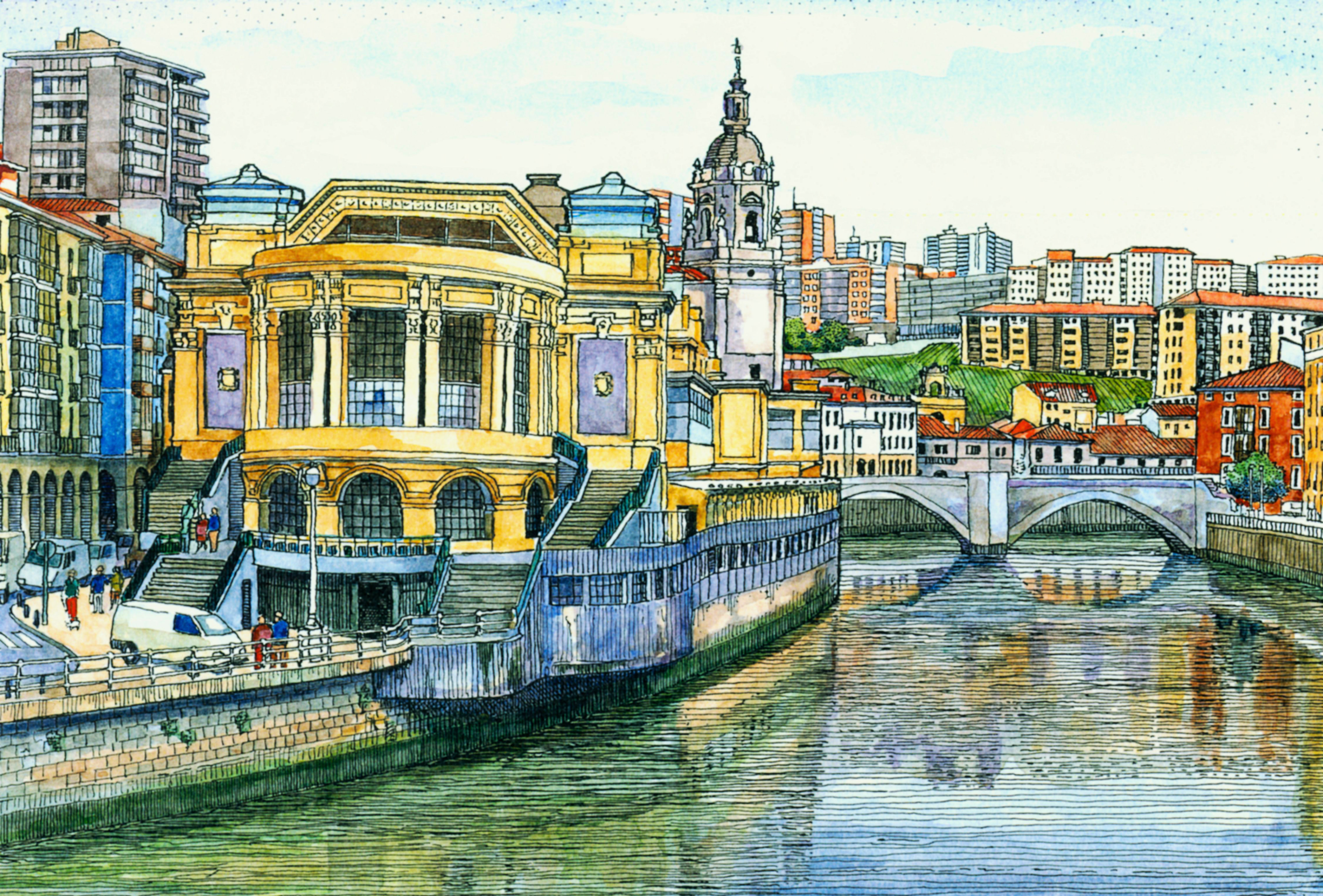Basque ethnography at a glance

View of St Anthony’s weathervane. Bilbao (Bizkaia). Watercolour by José Ignacio Gutiérrez López-Vázquez.
As a university student, I took an Easter holiday to Andalusia. On my return home I recounted what I had seen: the Mosque of Córdoba, the Alhambra of Granada, the Giralda of Seville.
Upon hearing this I remember my grandmother said to me: “Hain urrin joan zarie Jiralda ikusten Bilbon eukita?” (Why go all the way to Seville when there is a Giralda in Bilbao?). This was the first time I heard about the Giralda of Bilbao, which is, as she pointed out, mounted on top of the tower of St Anthony’s Church. I have ever since tried to gather testimonies which would ratify the information given by my grandmother but is not easy.
The Giralda —literally, “she who turns”— does physically exist, for it is the name given to the weathervane on the said church tower. The quotes below define and describe it:
“Next to it stands the bell tower (1774), built by Manuel de Capelastegui following the design of Juan de Iturburu, surmounted by a giralda (a weathervane sculpture featuring, in this case, an allegory of Faith) crafted by Jerónimo de Argos.” (bilbaopedia.info/iglesia-san-anton)
“The construction of the new bell tower started in 1774. The primitive tower, to which an impressive spire with its giralda had been added in the 17th century, was taken down and the one we see today erected in its place. The steeple, regarded as one of the best examples of stunning 18th-century baroque art, is crowned with a dome and a light, and finished with a cast-copper giralda or vane made by a smith in Ascao Street in Bilbao.” (sites.google.com/site/bilbaometropoli/fichas/ficha-2)

St Anthony’s Church and Bridge. Bilbao (Bizkaia), c. 1870. Pedro Telesforo de Errazquin.
‘Giralda’ has been a popular name for stores and businesses in Bilbao, such was the extent of the fame of the ornament. What is more, grandmother told me it was common for women from Arratia commuting to the marketplace in Bilbao by tram to let fellow neighbours know, should somebody have a little errand for them to run. If that was not so, the expected reply would be a: “Gorantziak Jiraldari!” (My regards to the Giralda!).
Although I have been unable to confirm the aforementioned habit with other informants, these Basque verses provided by Eduarda Bilbao, native of Dima (Bizkaia), on two separate occasions in the 1980s and preserved in the Labayru Fundazioa Archives, serve as further proof of the popularity of the Giralda:
Jiralda Santantoiko
beti goruetan,
beti goruetan da
ardazkarikan ez.
Jiralda Santantoiko
geixorik i dago,
ondiño bisitiaz
joateko nago.
Imeni bi gaztaiñe,
bi korda berakatz,
hiru libre laurengo,
bederatzi ardatz.
(St Anthony’s weathervane/ always spinning, / always spinning / without spindle. // St Anthony’s weathervane/ is said to be ill, / still for a visit / I have not been. // Two quarters of chestnuts, / two strings of garlic, / three pounds and a quarter, / nine spindles.)
Igone Etxebarria – Labayru Fundazioa
Translated by Jaione Bilbao – Language Department – Labayru Fundazioa
Recordings by Carmen Bernaola in 1982 and Ziortza Intxaurraga in 1986, both in Arantzazu.

